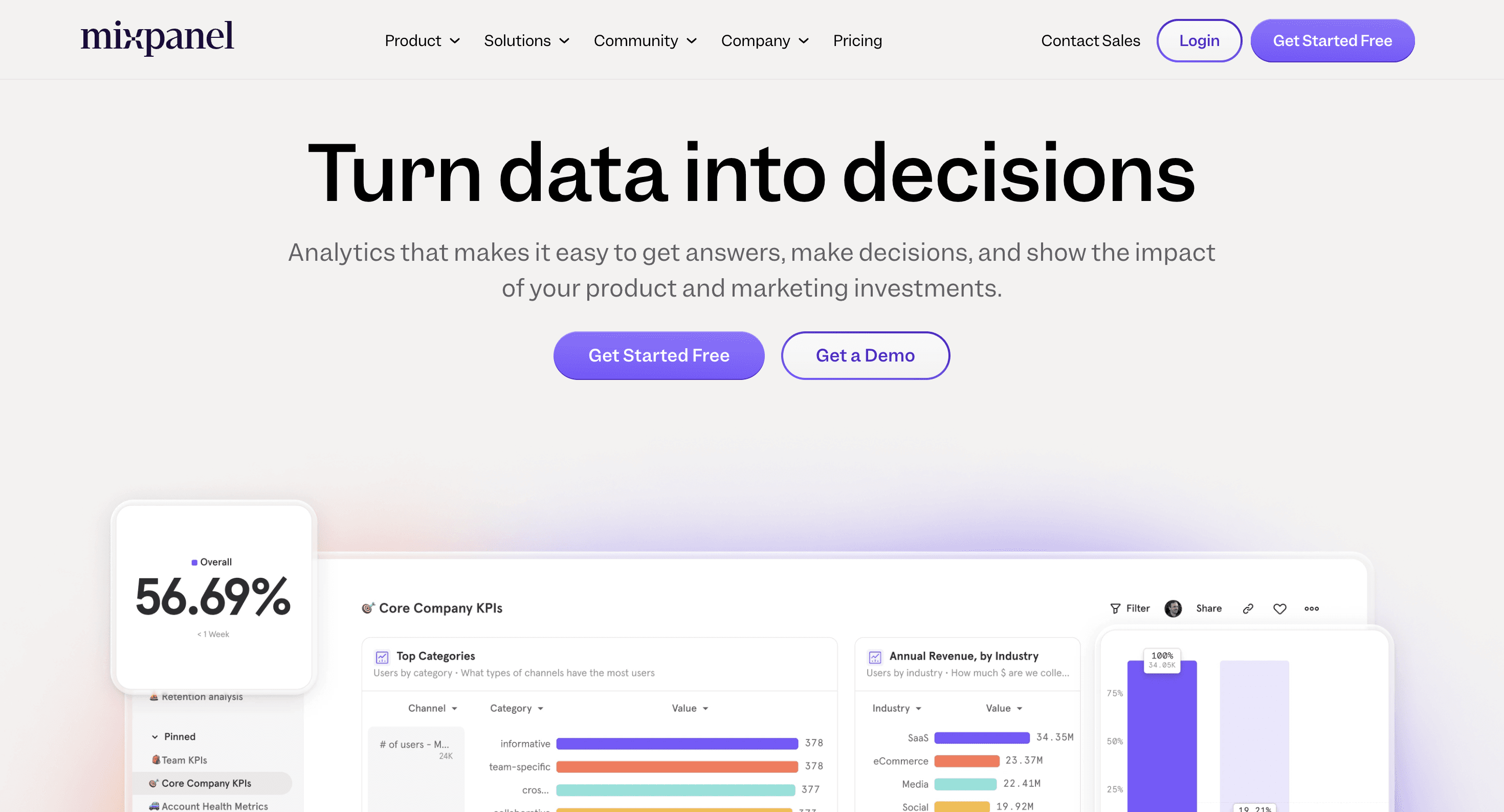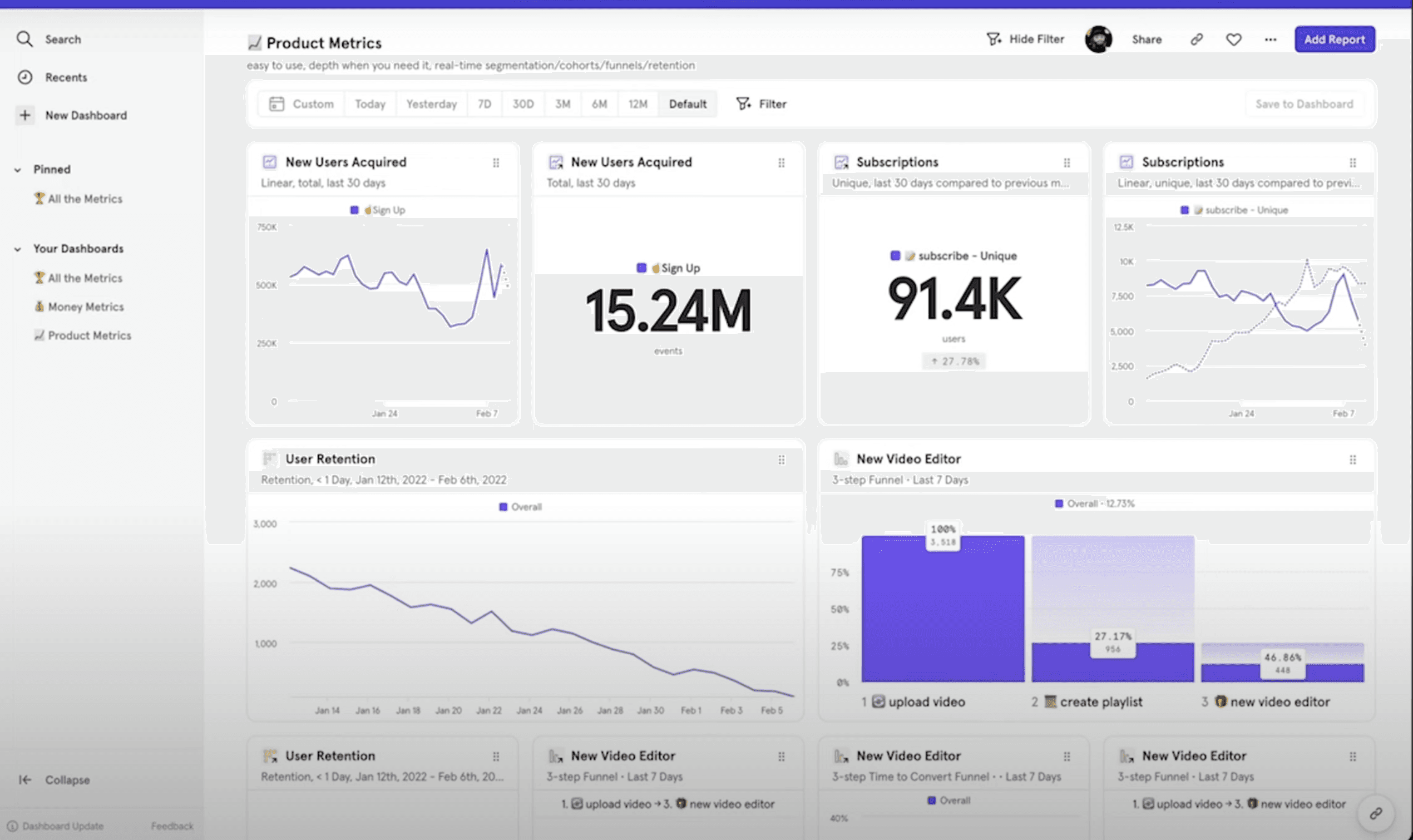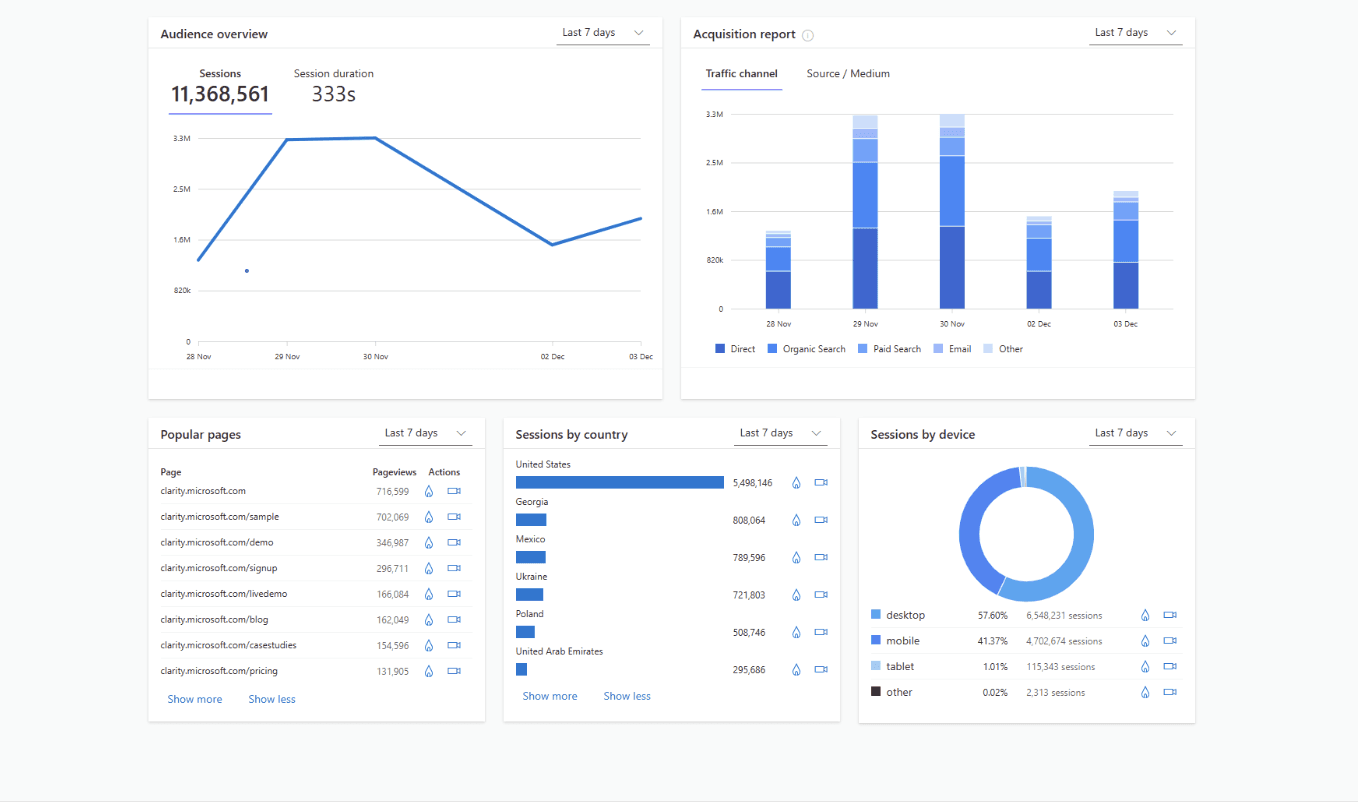
Mixpanel vs Google Analytics for Maximizing Conversion Rates

by
Wiktoria Slowikowska
Oct 22, 2024
Identify and convert your most valuable users
Sign Up
When it comes to increasing conversion rates, selecting the right analytics tool is key. Two of the most popular platforms in this space, Mixpanel and Google Analytics, offer powerful tools to track, analyze, and optimize conversions. However, these platforms approach data in fundamentally different ways. Understanding their differences will help you determine which is the best fit for your business.

Two Different Approaches to Conversion Optimization
While both Mixpanel and Google Analytics provide insights that can drive conversion rate optimization (CRO), their methodologies and strengths vary significantly. Mixpanel focuses on user behavior and event-based tracking, while Google Analytics is known for its traffic analysis and acquisition-based insights. Both offer value, but they serve different purposes in improving conversions.
How Mixpanel Optimizes Conversion Rates

Mixpanel stands out for its event-based tracking system. Rather than simply analyzing page views or sessions, Mixpanel allows you to track specific user actions, like clicks, sign-ups, and purchases. This detailed level of tracking is highly beneficial for conversion rate optimization, as it helps identify which actions drive conversions and which ones do not.
One of the most powerful features in Mixpanel is its conversion funnel analysis. You can build funnels based on specific events—such as visiting a landing page, adding an item to a cart, and completing a purchase—and then track how users move through each step. This helps pinpoint exactly where users are dropping off and allows for targeted improvements to boost conversion rates.
Additionally, cohort analysis in Mixpanel allows you to group users by shared behaviors or characteristics, such as users who signed up within a specific time frame or who completed certain actions. This helps identify which segments are converting better and why, so you can tailor your strategy accordingly.
A/B testing and experiment tracking are also central to Mixpanel’s capabilities. By running A/B tests, you can see how different versions of a page or call-to-action (CTA) perform and optimize accordingly. Mixpanel provides real-time insights, enabling businesses to make data-driven decisions quickly and iterate to improve conversions consistently.

Mixpanel’s Core Features for CRO:
Event-based Tracking:
Track custom events like clicks, form submissions, and purchases.
Gain real-time insights into how user actions impact conversion rates.
Funnel Analysis:
Build custom funnels to track users from acquisition to conversion.
Identify key drop-off points and optimize your funnel to boost conversions.
Cohort Analysis:
Segment users based on their behaviors and actions.
Track how different user groups progress through the conversion funnel over time.
A/B Testing and Experimentation:
Test variations of landing pages, CTAs, or features.
Measure the direct impact on conversion rates and adjust strategies in real time.
How Google Analytics Optimizes Conversion Rates

Google Analytics, particularly in its newer GA4 version, focuses on tracking traffic acquisition and behavior across sessions, making it ideal for businesses looking to understand how visitors arrive at their site and what drives them to convert. Google Analytics is well-suited for tracking macro-conversions like purchases or sign-ups, as well as micro-conversions such as clicks on CTAs or time spent on key pages.
Google Analytics' Goal and Event Tracking is essential for conversion optimization. You can set up goals that represent specific user actions, such as completing a form, and track how often these actions are achieved. For eCommerce businesses, Google Analytics offers detailed eCommerce tracking, allowing you to monitor transactions, product performance, and revenue.
While Google Analytics doesn’t offer the same level of granularity in tracking individual user events as Mixpanel, its strength lies in attribution analysis and multi-channel tracking. It helps you understand how different marketing channels—such as paid ads, organic search, social media, and email—contribute to conversions. This is crucial for optimizing marketing spend and focusing efforts on the channels that bring the highest ROI.
Google Analytics also offers funnel visualization, but it’s more complex to set up than Mixpanel’s event-based funnels. However, the ability to track user journeys across devices and channels gives Google Analytics an edge when it comes to multi-touch attribution and understanding the full user journey.

Google Analytics’ Core Features for CRO:
Session-based Tracking:
Analyze how users engage with your site across sessions.
Track traffic sources and site-wide behavior metrics.
Goal and Event Tracking:
Set conversion goals to track key user actions such as form submissions or purchases.
Track micro and macro conversions to optimize both small interactions and major actions.
Ecommerce Tracking:
Monitor sales, product performance, and revenue.
Track detailed eCommerce metrics like cart additions and checkout steps.
Attribution and Multi-channel Tracking:
Analyze which channels and touchpoints contribute to conversions.
Understand the impact of different marketing efforts on conversion rates.
The Technical Side: Implementation and Setup
Mixpanel is relatively easy to implement. After adding a JavaScript snippet to your website or app, you can begin defining custom events and tracking specific user actions right away. While the event setup may require developer input, the system’s intuitive interface makes it straightforward to manage and analyze conversion data.
Google Analytics, while also involving the addition of a tracking code, requires more effort in setting up custom events and goals. However, its integration with other tools in the Google ecosystem (such as Google Ads) makes it a powerful option for businesses focused on multi-channel marketing and conversion attribution. For teams that rely heavily on advertising and marketing data, Google Analytics can provide a more comprehensive view of conversion performance across channels.
Pricing Structure
Mixpanel:
Free Plan: Supports up to 100K monthly tracked users with basic event tracking.
Growth Plan: Starts at approximately $25/month for more advanced features and larger data needs.
Enterprise Plan: Custom pricing for large organizations with complex analytics requirements.
Google Analytics:
Standard Version: Free for most users, supporting up to 10 million hits per month.
Google Analytics 360: Starts at $150,000 per year for enterprise-level features and advanced capabilities.
Making Your Choice
The decision between Mixpanel and Google Analytics for maximizing conversion rates depends on your specific business needs and the depth of data you want to analyze.
Choose Mixpanel if you:
Need detailed event-based tracking to understand specific user behaviors.
Want powerful funnel analysis and cohort segmentation to pinpoint drop-offs and optimize the conversion process.
Rely on A/B testing and real-time insights to continually improve conversion rates through experimentation.
Choose Google Analytics if you:
Focus heavily on traffic acquisition and need detailed insights into how different marketing channels drive conversions.
Want to track and optimize both macro-conversions (like purchases) and micro-conversions (like CTA clicks).
Rely on multi-channel attribution to understand the full user journey across devices and touchpoints.
The Bottom Line
Both Mixpanel and Google Analytics are powerful tools for conversion rate optimization, but they serve different purposes. Mixpanel excels at tracking specific user behaviors and building custom funnels, making it ideal for teams focused on user-centric, event-based analytics. Google Analytics, on the other hand, offers robust capabilities for tracking traffic sources, multi-channel conversions, and site-wide behavior, making it better suited for marketing-driven teams.
Your choice should ultimately depend on whether you need in-depth user behavior analysis (Mixpanel) or a holistic view of traffic and marketing channels (Google Analytics).




